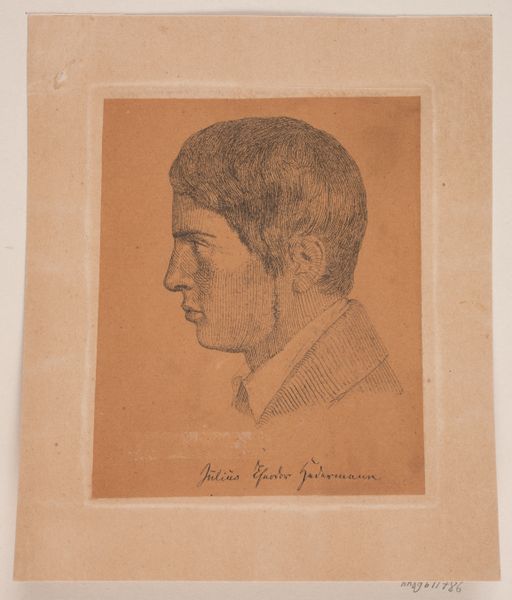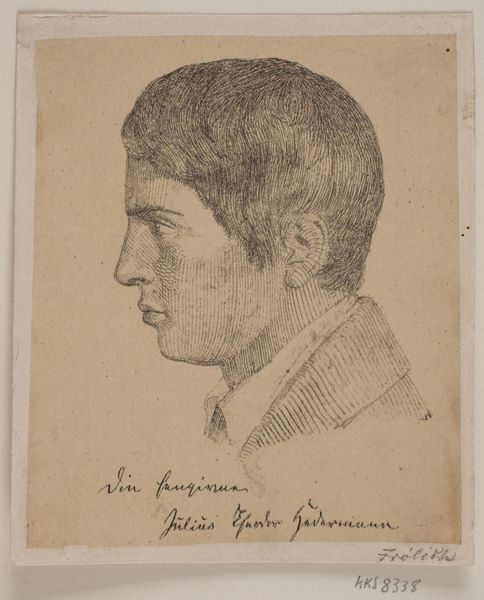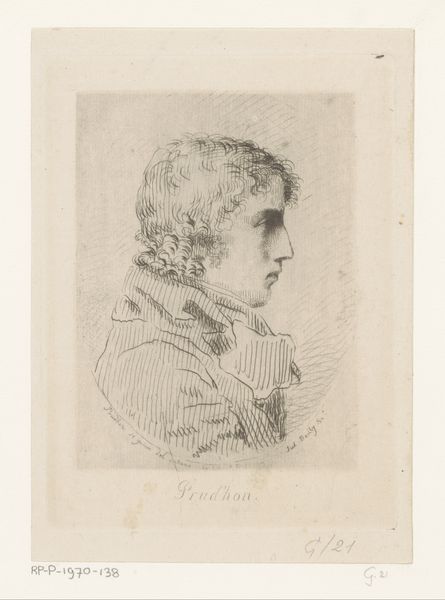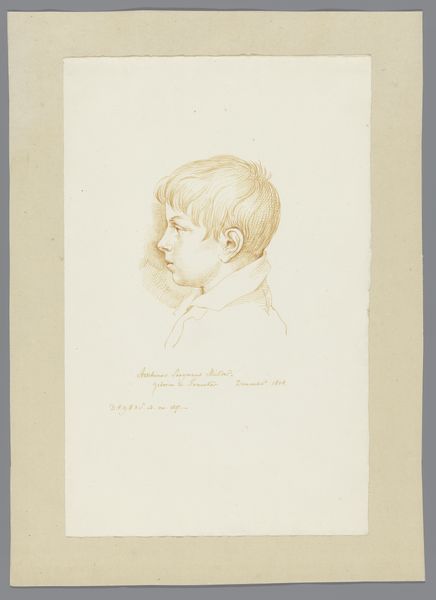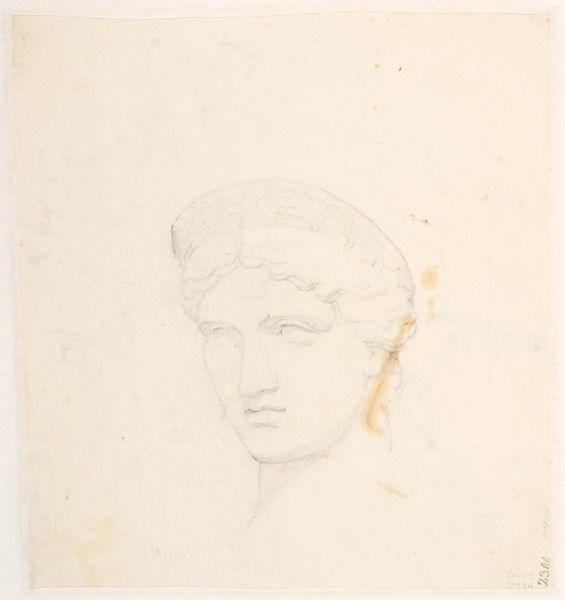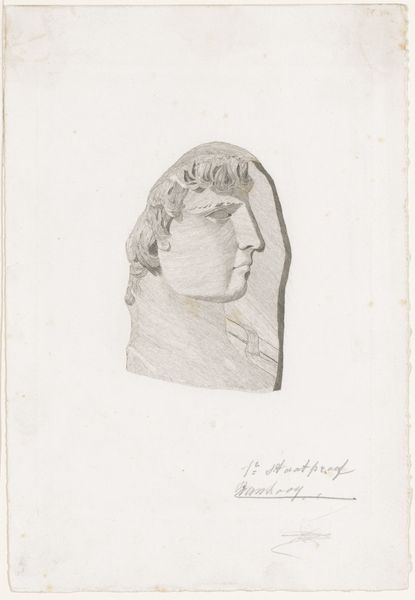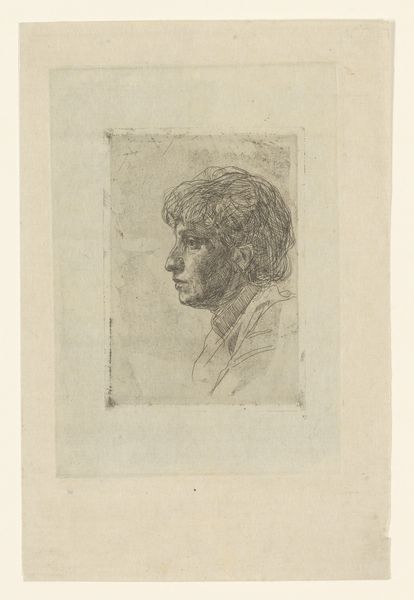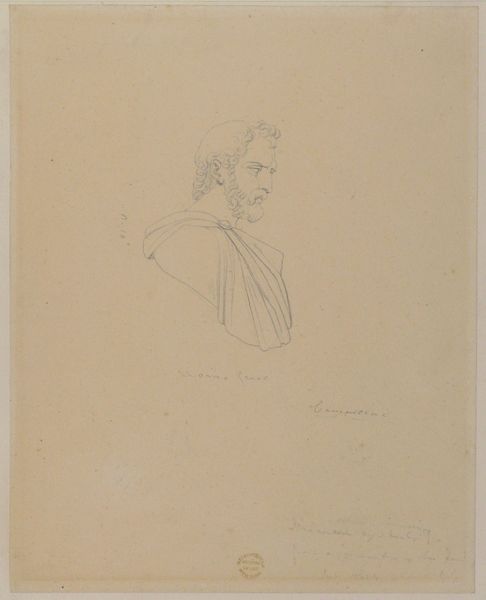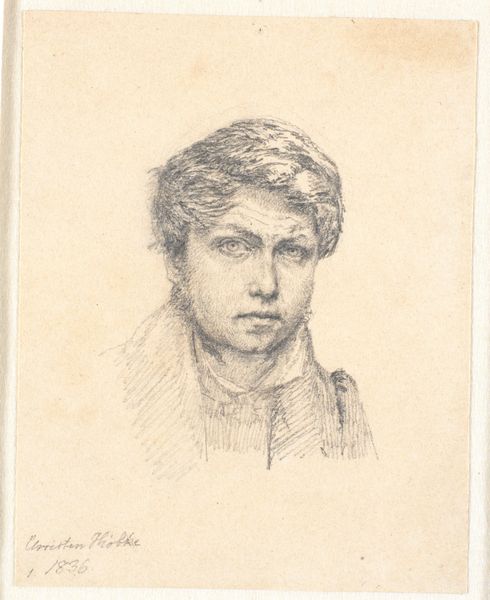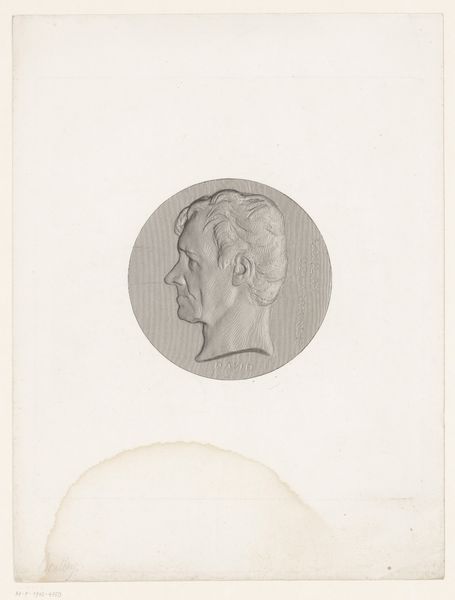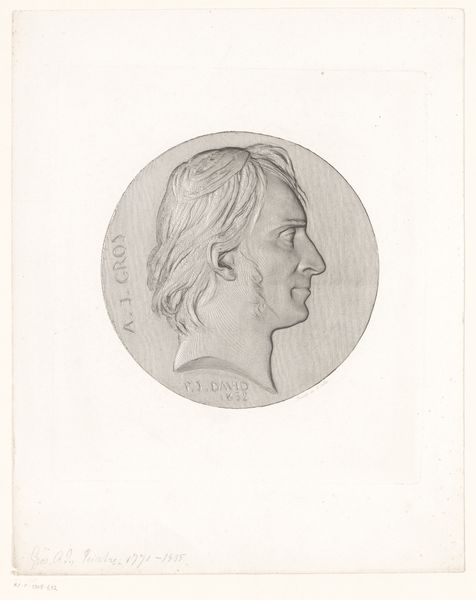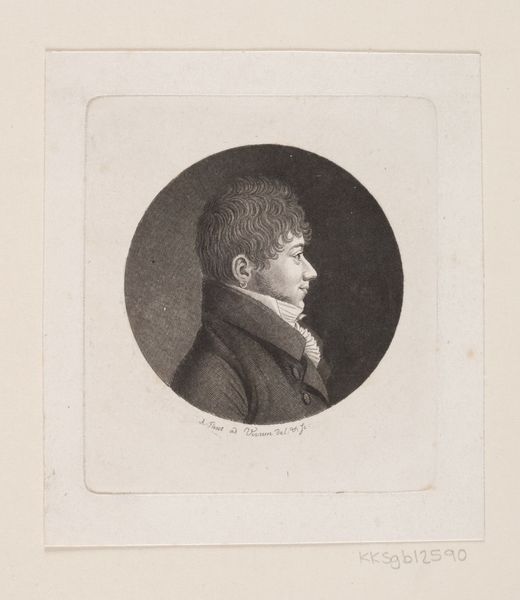
drawing, print, pencil, engraving
#
portrait
#
pencil drawn
#
drawing
# print
#
pencil sketch
#
charcoal drawing
#
pencil drawing
#
romanticism
#
pencil
#
portrait drawing
#
engraving
Dimensions: 106 mm (height) x 89 mm (width) (plademaal)
Curator: Here we have a portrait by Lorenz Frølich, "Julius Theodor Hedermann," created around 1840. It’s a delicate pencil and engraving print now residing at the SMK, Statens Museum for Kunst. Editor: The first thing that strikes me is the stark simplicity. It's almost… ghostly, isn’t it? The light etching against that aged paper, like a faded memory. He’s facing away, not quite meeting our gaze—is he avoiding something, or is he lost in thought? Curator: Considering its historical context, portraits like this served crucial social functions. They were records, status symbols, but also circulated amongst social circles as endorsements. Representing yourself via portrait was a performance in and of itself. Frølich was capturing not just Hedermann’s likeness, but his social standing, if only by association, or to enhance it by bestowing the cultural capital and social presence associated with fine art. Editor: A social passport! But looking at the cross-hatching, the fine lines trying to capture the shadows of his face—there’s an incredible intimacy in that work too. Even the Romantic inclination toward emotional depth seeps through here in the minute attention to detail, don't you think? As if Frølich saw something beyond mere status in Hedermann. Curator: Well, it is undeniably a product of the Romantic era, prioritizing individual expression and introspection. Yet the formality of the portrait style situates it firmly within the social conventions of the time. Even in trying to highlight individual emotion, artists like Frølich worked within established power structures. The choice of engraving itself also lends itself to ideas of democratizing and creating art for broader distribution than oil paintings of this period. Editor: So even those faint lines whisper stories of class, and societal roles. The more you delve into the artwork, the more is on display. But beyond that there's still an elegance and care. Thank you for expanding my understanding. Curator: And thank you; your observations remind us of the human presence imbued into every artifact of social practice.
Comments
No comments
Be the first to comment and join the conversation on the ultimate creative platform.
